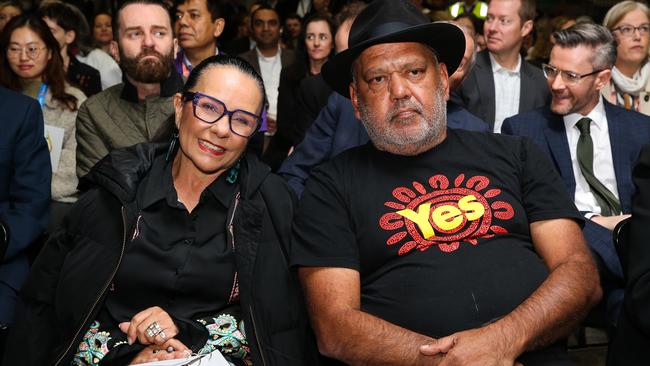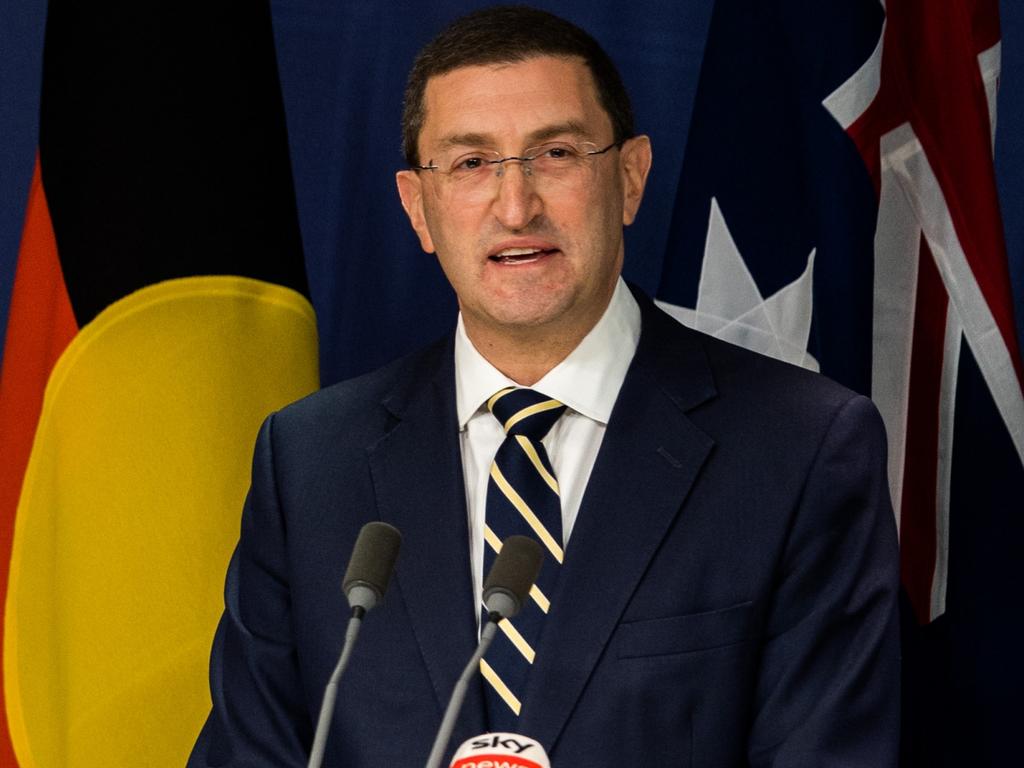Linda Burney open to Noel Pearson’s proposal for Indigenous voice to parliament to allow for ‘dissenting views’
Labor has opened the door to Noel Pearson’s suggestion to allow dissenting Aboriginal leaders to formally break from the voice’s majority-backed advice.

Labor has opened the door to allowing dissenting Aboriginal leaders to formally break from the voice’s majority-backed advice, as Indigenous Australians Minister Linda Burney declares “different views and opinions are a good thing”.
Ms Burney on Wednesday would not rule out the suggestion by Indigenous leader and Yes campaigner Noel Pearson that the body be designed so “dissenting voices (are) formally allowed”, in line with how parliamentary committees were run.
Mr Pearson told The Australian’s first Great Voice Debate that “there might be a consensus view of the voice about something but if Cape York wants alcohol control, we should be able to give that advice”.
When asked whether the Albanese government was open to allowing advice from dissenting views among the voice’s membership to be formally expressed, Ms Burney left the door open to such a design feature.
“Different views and opinions are a good thing,” she said. “Our democracy is enhanced by a diversity of perspectives and experiences – and that’s what the voice will help to bring about.
“The voice will include Indigenous Australians from every state and territory, the Torres Strait Islands and representatives from the regions and remote communities … Listening to locals leads to better outcomes because we know that listening to people from grassroots communities leads to better results.”
Constitutional experts George Williams and Greg Craven say the influence of the advisory body could be undermined if it presented various views on the same issue.
“It is better that the voice speak collectively on behalf of its membership even if, as expected, there are differences of opinion,” Professor Williams, the University of NSW deputy vice-chancellor, said.
“The effectiveness and influence of representations by the voice may be compromised if the voice represents multiple positions at once.”
Tom Calma – who with Marcia Langton designed a detailed voice model not yet endorsed by the government – said “the intention is it wouldn’t get down to that”.
Professor Williams, who sat on the government’s constitutional expert group with Professor Craven, said there was “no problem” with members of the voice indicating publicly that they had taken a different view, as long as the advisory body came to a consensus position.
Mr Pearson said allowing for dissenting views to be formally expressed was only “his position” and noted the ultimate design of the body would be for the parliament to decide.
Greens First Nations spokeswoman Dorinda Cox and Liberal Yes campaigner Julian Leeser said the conversation over how differing views were handled was a conversation for next year and subject to the will of parliament.
Opposition Indigenous Australians spokeswoman Jacinta Nampijinpa Price said it was wrong to think one body could represent the views of all Aboriginal people.
“We have the ability to speak and disagree right now, just like all other Australians, we don’t need a voice to allow that,” she said of Mr Pearson’s proposal.
Professor Craven said while there was an argument for the body to provide a number of opinions to ensure government was given “a full range of views”, there was also the need to ensure such a mechanism did not impact the effectiveness of the voice.
“The argument is … you wouldn’t want a report from the voice that was 120 pages long, 60 pages of which was people disagreeing. It's a very fine balance,” he said.
Professor Craven said if dissenting views were allowed, they would need to be constrained or kept to a certain length.
He also disagreed with Mr Pearson on the removal of “the outdated race power” from the Constitution, which he said had been used “highly beneficially” and achieved outcomes like the Native Title decision.
Professor Williams said the races power was “fundamentally at odds with our values as a nation”.
University of Sydney constitutional law expert Anne Twomey said if she was starting with a clean slate in writing the Constitution, she wouldn’t put it in.
Noting the October 14 referendum was not about the race power, Professor Twomey said just removing the section from the Constitution potentially left a gap in how to deal with special laws about Indigenous matters.
“There are concerns if you did delete the race power, you’d still need to put something else in its place to accommodate dealing with particular matters such as Native Title and cultural heritage,” she said.







To join the conversation, please log in. Don't have an account? Register
Join the conversation, you are commenting as Logout